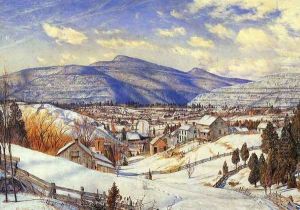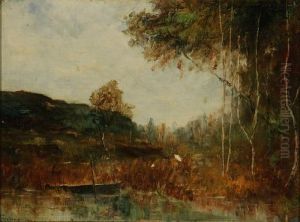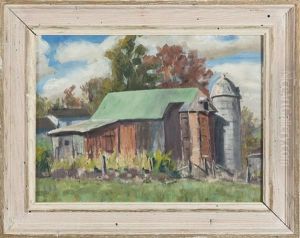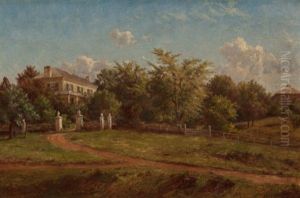Charles Herbert Moore Paintings
Charles Herbert Moore was an American artist and art historian, born in New York City in 1840. His work and academic contributions spanned the latter half of the 19th century and the early decades of the 20th century, marking him as a notable figure in the American art landscape of his time. Moore's career was multifaceted, encompassing painting, architectural history, and academia, which positioned him as a bridge between the practical world of art creation and the theoretical realm of art study.
Initially trained as a painter, Moore's artistic endeavors were largely focused on landscape painting. He was influenced by the Hudson River School, a mid-19th century American art movement embodied by artists who depicted the American landscape through a romantic lens, emphasizing the beauty and grandeur of the country's wilderness. Moore's landscape paintings, characterized by their detailed naturalism and sensitivity to light, reflect this influence and contribute to the broader narrative of American landscape art in the 19th century.
Moore's interests and career, however, extended beyond painting. He became deeply involved in the study of medieval architecture, which significantly influenced his later work. His academic career took a definitive shape when he joined Harvard University's faculty, where he spent the bulk of his professional life. At Harvard, Moore was instrumental in developing the Department of Fine Arts, one of the first of its kind in the United States, and served as its first head. His leadership and vision for art education at Harvard underscored the importance of direct engagement with art and architecture, and he was pivotal in establishing a foundation for art historical studies in the United States.
Beyond his contributions to academia, Moore was also a prolific writer, authoring several books and articles on architectural history and theory. His works contributed significantly to the scholarly discourse on Gothic and medieval architecture, areas in which he was considered an expert. Moore's scholarly output helped to elevate the study of architectural history in the American academic context, bridging European artistic traditions with burgeoning American interest in art history.
Charles Herbert Moore's legacy is multifaceted, touching on the worlds of painting, teaching, and scholarly research. He passed away in 1930, leaving behind a body of work that continues to be referenced by art historians and scholars. His career, marked by a transition from artist to academic, illustrates the evolving nature of art and its study in America, reflecting broader changes in the appreciation and understanding of art during his lifetime.




